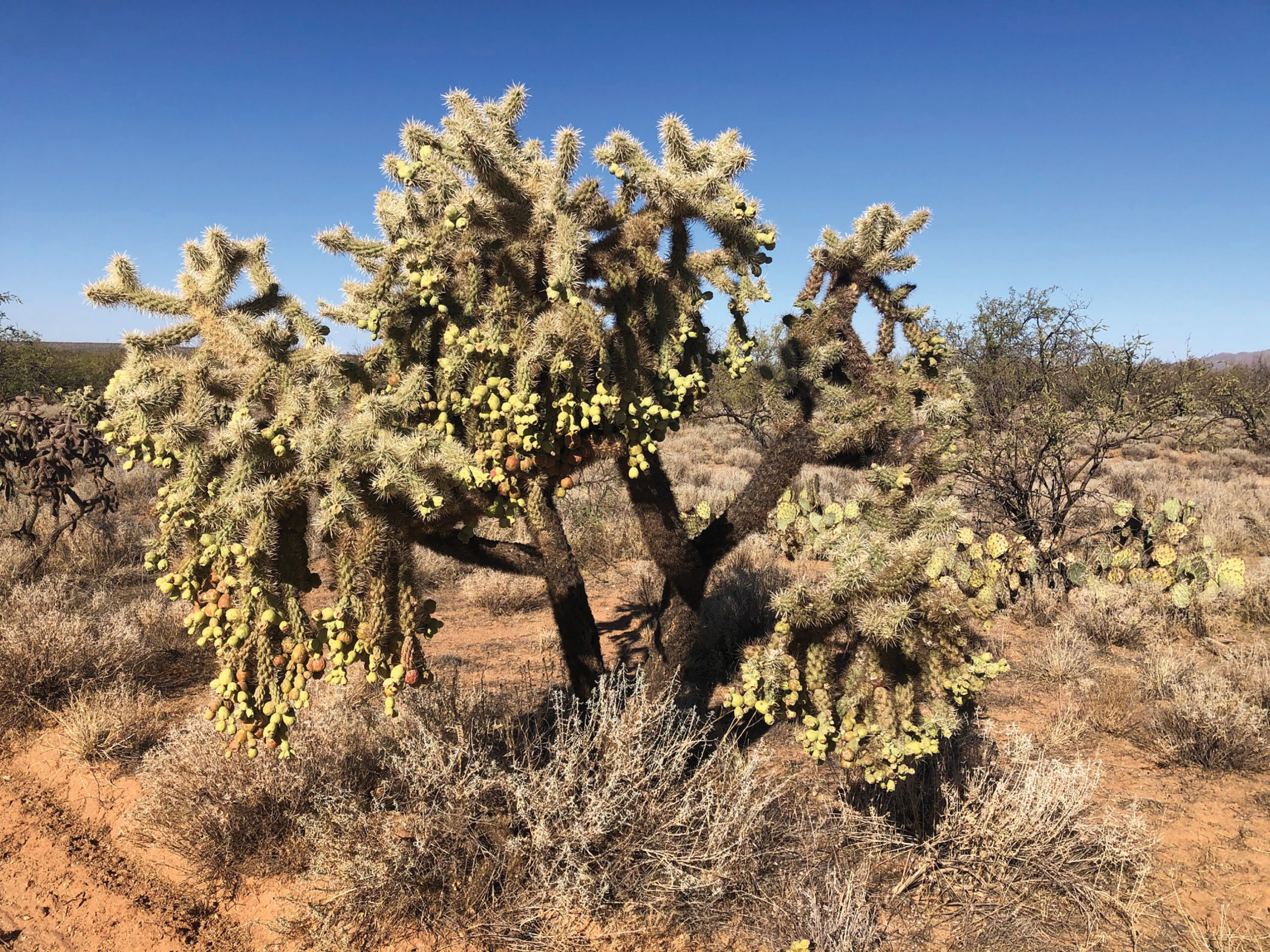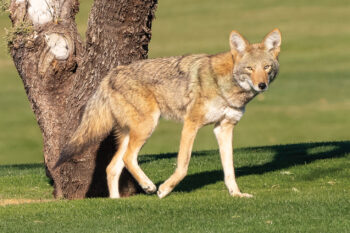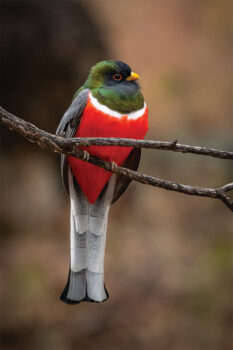
Chain fruit cholla (Photo by Jim Hoagland)

Javelina (Photo by Jim Hoagland)

Coyote (Photo by Jim Hoagland)

Elegant trogon (Photo by Jim Hoagland)
Jim Hoagland
Living at SaddleBrooke Ranch and interacting with nature’s many birds, mammals, butterflies, plants, and nature’s other creations has me wondering, “Am I just more focused and aware of my surroundings or is there truly more biodiversity here?”
The answer came after attending a recent Zoom class on biodiversity in our region presented by Jennie MacFarland, the Bird Conservation Biologist and Tucson Bird Count Coordinator for Tucson Audubon Society.
“We are very lucky here in Southeast Arizona to have a tremendous natural biodiversity,” she explained.
I can tell you the numbers speak for themselves: 525 bird species, 144 mammal species, 1,300 bee species (the most diverse spot in the world), 3,000 butterfly and moth species and over 3,500 plant species.
There are some exceptionally good reasons that we have such diversity here. We usually only think of our desert habitat but look all around our SBR community and you see several different mountain ranges. Our “Sky Island” habitat (isolated mountains surrounded by radically different lowland environments) are forested mountain ranges surrounded by seas of desert and grasslands. Plus, we have many riparian areas along the many rivers and streams, especially during normal rainfalls, bringing more diversity of habitat and wildlife to our environment.
Besides these various habitats, we are in a geographic area where three different deserts converge and overlap: the Mojave, Sonoran, and Chihuahuan deserts. Then add that to the two major ecological zones of the Rocky Mountain range to the north and the Sierra Madre Occidental to the south. It is no wonder we have such a biodiverse region.
The Sierra Madre Occidental influence, coming into southeast Arizona from west Mexico, does bring in influences of the tropics; such birds as the elegant trogon, to mammals like the coatis and even javelina. The southeast Arizona region is the only area of the United States to find these tropical species and the only area to find breeding populations of the bird, elegant trogon, in the United States.
The arroyos provide great habitat for coyotes and javelinas, the most common mammals we see at SaddleBrooke Ranch area. The occasional deer, bobcat, and, even rarer, a mountain lion will show up in someone’s trail camera from time to time.
Although we do not have all the various habitats here at the Ranch, my bird species count here has surpassed 120 species in the last seven months. The backyard, arroyos, nature trail, and pond all provide great habitat for viewing our feathered friends as well as the other wildlife.
Although we lack saguaros here at our 3,500-foot elevation, there are many other cacti, trees, and shrubs of the desert to enjoy and they all provide homes for our creature friends. We commend many of you for creating your backyard habitat using native plants to attract wildlife, one way you are contributing to the concept of reconciliation ecology.
So, enjoy our biodiversity here at SBR and beyond. Remember to respect their homes and habitat, they were here long before us.
